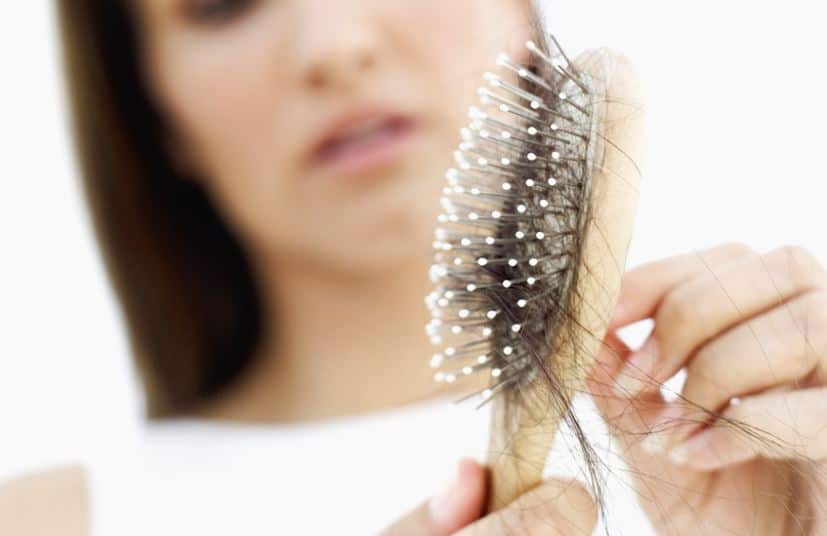Did you know that you could be suffering from hair loss without your knowledge? Studies have been able to show shocking statistics about this problem in the United States alone. Nevertheless, what exactly is this thing called it; how does it come about? Are there any symptoms, causes, and remedies of hair loss?
Normal loss
Generally, it is a fact that from a scalp f 100,000 hair follicles, 0.01% or 100 fall off per day. This is considered as normal hair loss.
Excess loss of hair
Many types of researches have already been conducted throughout the years, a few of them revealing a lot of information about this problem. These researches show different results on hair loss between the two genders.
According to Statistic Brain, the number of Men in America affected by hair loss is 35 million while that of women in the United States experiencing this problem is 21 million. These figures can be shocking, but the facts show for themselves. Let’s dig deeper into the problem both men and women.
In general, males are more prone to baldness, or hair loss compared to women as already seen from the above statistics.
Possible causes of hair loss
It may be caused by some nutritional deficiency. Having excessive intake of sodium, or sugar can cause it. Hormonal imbalance also can cause the hair to fall out. Human hormones such as estrogens or androgens, as well as overactive or an underactive thyroid gland have been pointed out as the possible causes in a majority of people with the problem.
It is also noticeable for patients who had major illnesses or just undergone major surgeries. This is the same with cases of women who just gave birth.
Although the problem of hair loss in such women can be temporary, other underlying factors may prolong it even after the women who newly gave birth stabilize their health. Stress and depression have been pointed out as some of the factors that may prolong it.
Moreover, birth control pills, antidepressants, medicines for gout, heart ailments, or high blood pressure can also cause this problem too. Conditions improve soon after one stops using the drugs. Children also fall victims of fungal infections, which cause this issue. Taking antifungal medicines will surely solve the problem.
Hairstyles and treatments also contribute. Pigtails or cornrows using tight rollers can cause traction alopecia. This is a form of gradual loss primarily caused by extreme pulling force applied to the hair. Perms, hot oil, and other treatments may also cause the follicles to get inflamed. This usually results in scarring and hair loss.
Statistics for men and women
Roughly, 50% of women suffer from hair thinning but from age 35 hair loss is already noticeable to 40% of men; rate is even increasing as they get older – from 65% by 60 to 80% by the age of 80. Only a minimal percent consider hair loss myths as the cause – wearing caps and hats (19%) over brushing (13%) and extreme shampooing (10%).
However, 82% of the adult population worldwide considers genetics as the main culprit. British men are on top of the list regarding balding issues but ironically, 87% of these men have yet to know about available treatments that are medically approved as well as scientifically proven.
In our modern society, where appearance counts a lot more than before, 60% of the sufferers would wish for more hair rather than money or friends, which is absolutely fine as people become more conscious in seeking fabulosity.
A rough 47% are even willing to spend their whole life savings just to regain it. Between 2004 and 2008, the number of alopecia victims seeking for professional treatment skyrocketed from 361,077 to 811,363.
Treatments and Solutions
Although demands are high, there are only a few numbers of solutions at hand. The only two treatments that are clinically proven as well as medically approved are Propecia and minoxidil.
In addition, the only FDA-cleared laser therapy is HairMax Laser Comb. With only a few options, more people are inclined to consider surgical restoration procedures to rectify the condition.
Hair grafting is a surgical procedure that involves the transfer of follicles from the donor area (a site where follicles are taken from) to the recipient site (the balding parts). Male pattern baldness is the primary target of this treatment.
With technology so advanced, grafting has developed so much that it is possible for an alopecia sufferer to change his image instantly. Hair transplantation is considered a minor surgery thus it is conducted as an outpatient case.
Scars resulting after the treatment by this method are also linear, which makes it possible for the patient to undergo more sessions if necessary.
